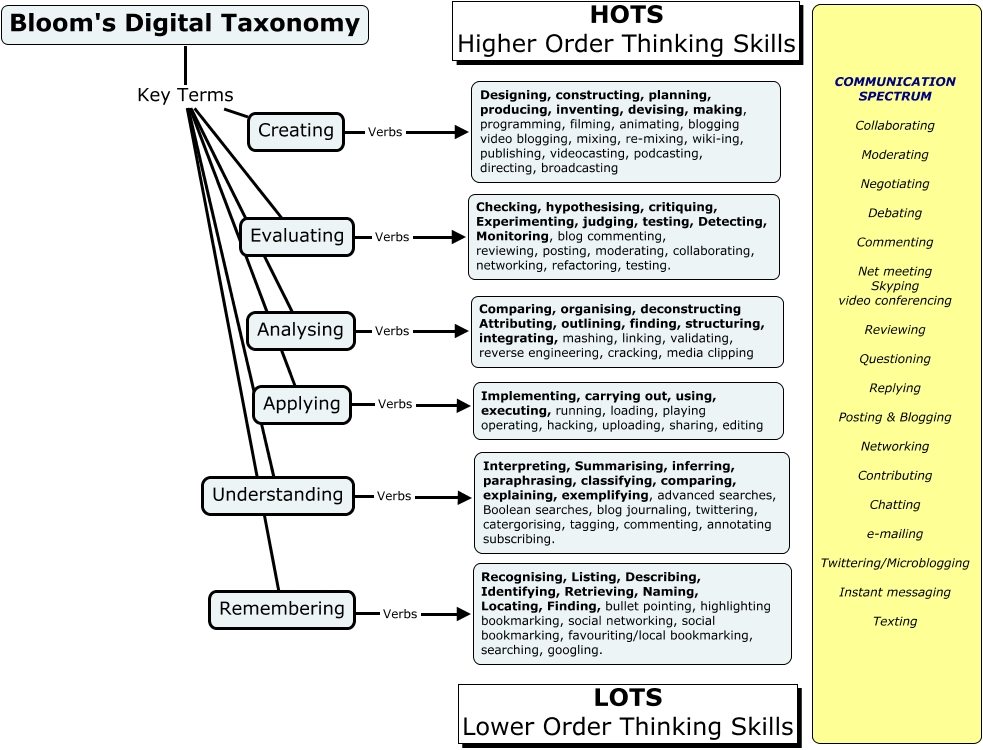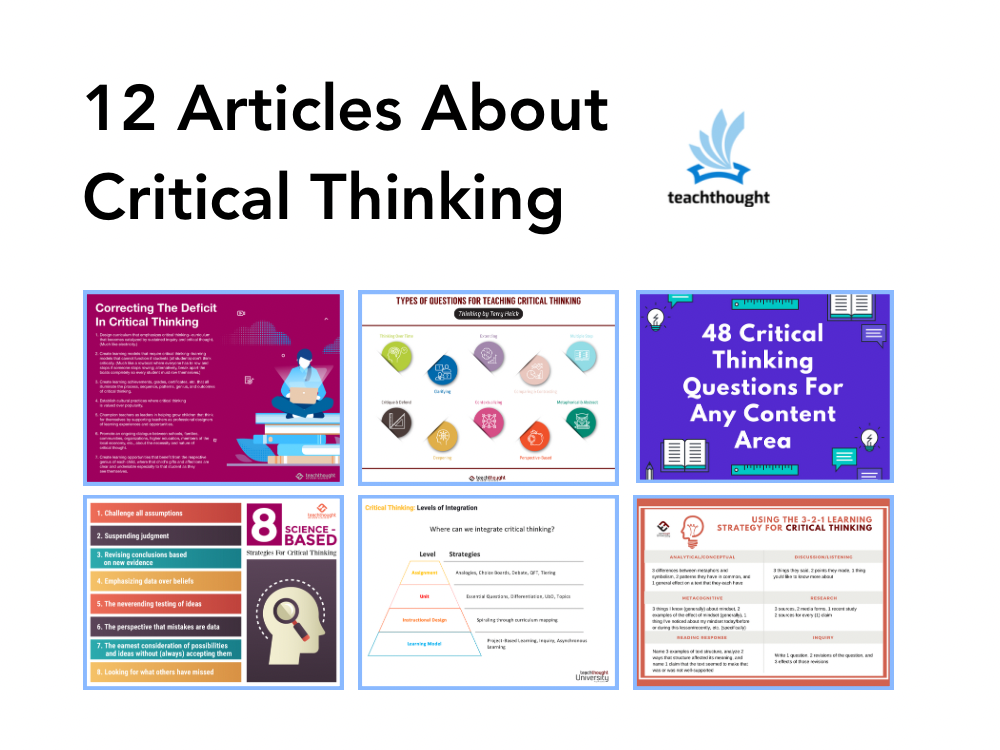
by TeachThought Workers
At TeachThought, we’ve described Bloom’s Taxonomy as “a hierarchical ordering of cognitive expertise that may, amongst numerous different makes use of, assist lecturers train and college students study.”
Whether or not you’re designing instruction, evaluating an evaluation, or observing a classroom, Bloom’s stays a strong software for understanding how considering occurs—and the way we will higher help it via intentional lesson design.
Bloom’s Digital Taxonomy builds on this framework by aligning those self same cognitive ranges—Bear in mind, Perceive, Apply, Analyze, Consider, and Create—with frequent digital instruments, media, and duties. In doing so, it helps educators design technology-rich classes that promote considering, not simply digital busywork.
The chart under is a visible model of this idea. It maps frequent digital actions—like running a blog, podcasting, bookmarking, tagging, networking, and wiki-building—to Bloom’s ranges of considering. Initially created by Andrew Church buildings on the now-defunct edorigami Wikispaces, this adaptation continues to supply a useful option to visualize how cognitive demand varies throughout digital duties.
In search of sensible classroom verbs as a substitute of process varieties? Discover our companion listing of 126 Bloom’s Digital Verbs For Know-how-Wealthy Educating.
Utilizing Bloom’s Digital Taxonomy within the Trendy Classroom
Whereas Bloom’s is commonly used to plan assessments or differentiate instruction, this model encourages lecturers to additionally consider the cognitive complexity of digital work. Are college students simply looking out and repeating, or are they synthesizing, designing, and reflecting?
The Communication Spectrum on the proper of the chart additional emphasizes how learners have interaction with others in digital areas—from messaging and posting to extra nuanced types of collaboration.
What About AI Instruments Like ChatGPT?
AI instruments like ChatGPT current new challenges and alternatives when seen via Bloom’s lens. For instance, prompting ChatGPT to summarize an article may fall beneath Understanding, whereas asking it to generate interview questions might land in Making use of and even Creating—relying on how the output is utilized by the coed. The secret’s within the design of the duty and the way learners are anticipated to work together with the software.
A Takeaway
This model of Bloom’s isn’t nearly matching tech instruments to ‘duties.’ As an alternative, it (hopefully) helps educators see the considering calls for embedded in digital actions—making the much less seen expertise in ChatGPT, streaming, social sharing, podcast creation, and extra.
Need a full listing of verbs primarily based on this framework? Take a look at 126 Bloom’s Digital Verbs For Know-how-Wealthy Educating.
Want a conventional model for lesson planning and evaluation? Go to Bloom’s Taxonomy Verbs For Educating and Evaluation.



